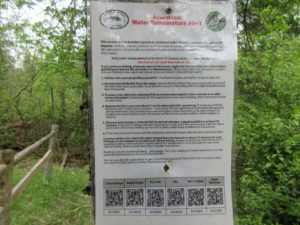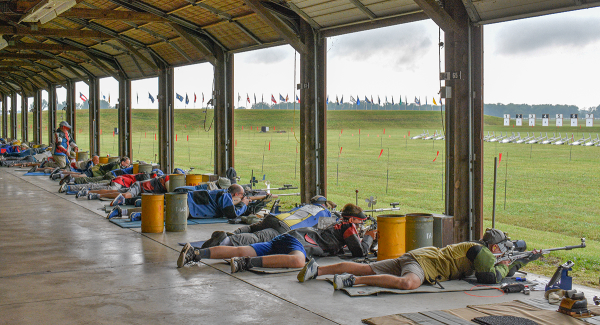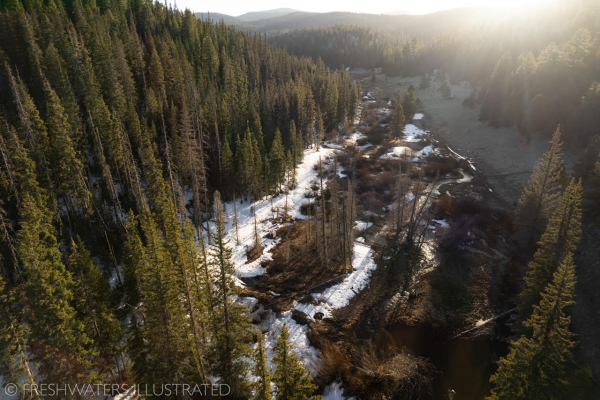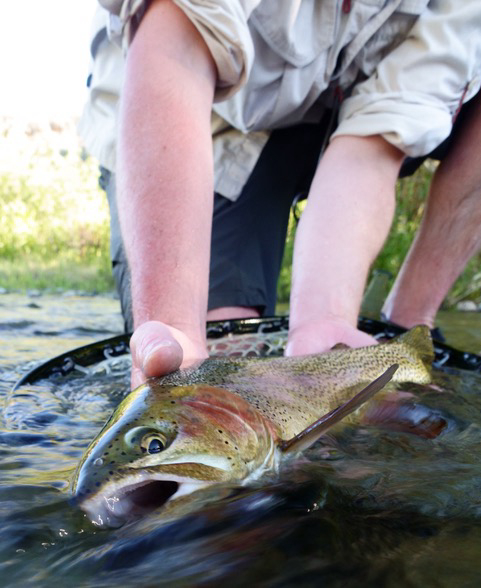Too Hot to Fish for Trout
By Glen Wunderlich
Charter Member Professional Outdoor Media Association (POMA)
During a recent fishing trip to the South Branch of the AuSable River in Crawford County, I came upon a sign posted at the Chase Bridge landing in bold text: This section of the AuSable is prone to sustained spikes in water temperature above 68 degrees. If the water temperature is at or above 68 degrees, please consider not fishing! Survival of our trout depends on this. I had to learn more.
Since it was a catch-and-release, flies-only section of the quality stretch, a person would not be permitted by law to keep any fish anyway. (An exception is made for youngsters, so check the rules.) The sign urged anglers to go somewhere else under such conditions. Obviously, one would need a thermometer for testing purposes. However, in this instance an alternative was provided right on the sign by virtue of the QR codes related to various portions of the river. By scanning a particular code with a smart phone, one could not only get the current water temperature at Chase Bridge, but other places along the river.
The idea of not fishing to protect trout during hot months – and particularly the hottest parts of a given day – seems to make sense, because trout are more prone to expiring after putting up a fight. Playing a fish (or, toying if you will) to exhaustion can turn an angler’s thrill to a lethal situation for the fish. Some countries have outlawed catch-and-release fishing altogether, regardless of water temperature, because of this.
A recent study by Idaho’s Department of Fish and Game, however, concludes that not fishing does not protect a significant number of trout during hot months in some waters.
While the study indicated that more trout caught when water temperature above 73 degrees F died after release, it also indicated that anglers were able to catch a lot fewer trout when the water temperature was 73 or higher, because fish simply quit feeding.
In colder water, the mortality of tagged and released fish was lower, but anglers caught a lot more fish, so the overall mortality was higher.
As we approach another hot spell this week, it’s important to understand that warming water will soon follow.
Here are some suggestions for those compelled to fish in questionable conditions.
* Subdue fish a quickly as possible by using heavier leaders and tightening any drags, if applicable.
* Do not remove the fish from the water. Unhook the fish in the net or water and limit the process to 10 seconds or less.
* If using a net, allow the fish to be submerged in it for a minute or longer, if the above step lasts for more than 10 seconds.
* Release the fish in an area where it can be observed while recovering. If necessary, hold the fish by the tail – never by its midsection. If the fish ends up on its side or tumbles, it must be held upright until it regains its balance.
* If the trout does not recover and regulations allow for harvesting, then keep it.
In summary, keep a stream thermometer on hand for critical temperature measurements. Fish for trout in early mornings or late afternoons. Another obvious alternative is to fish for warm-water species such as bass or panfish in other waters.







